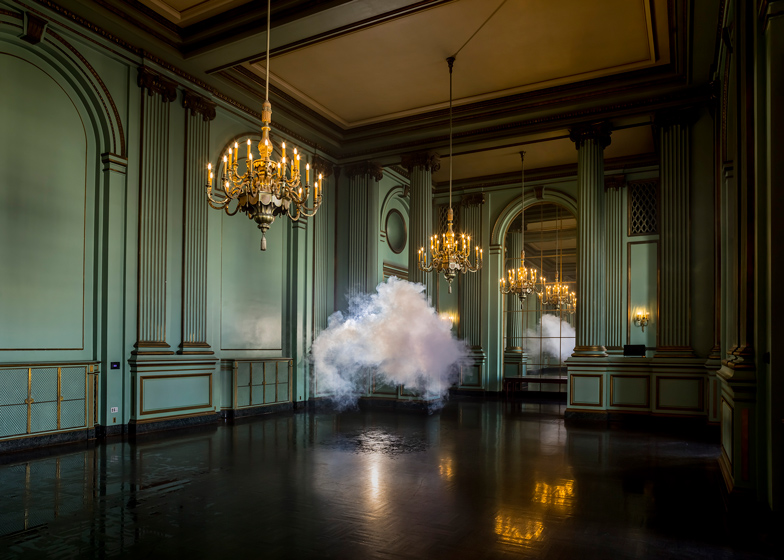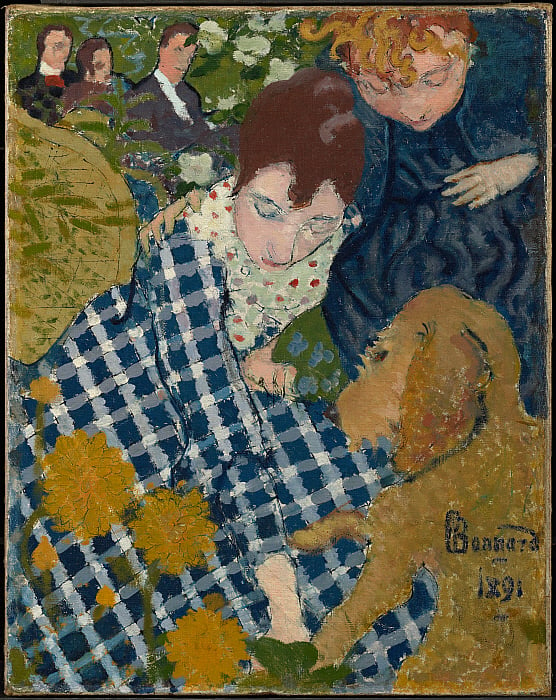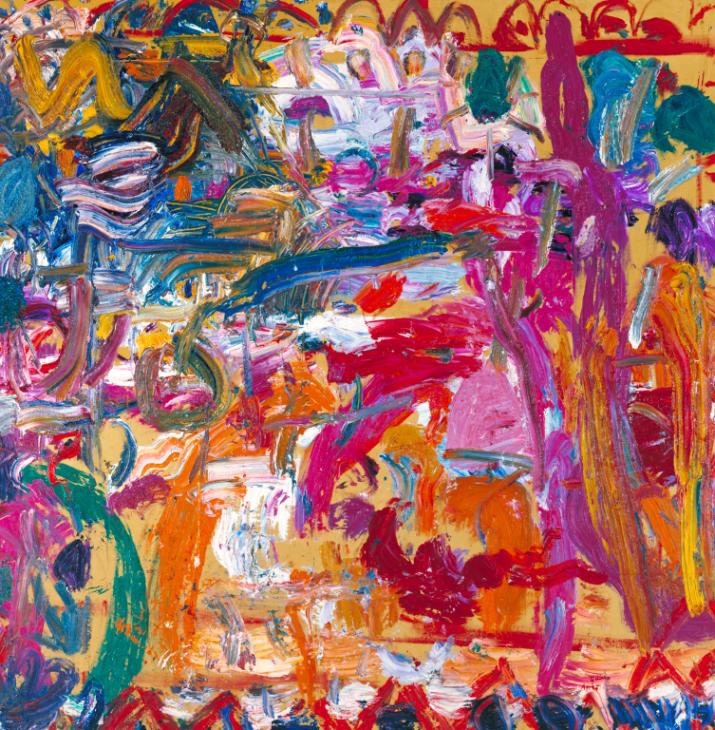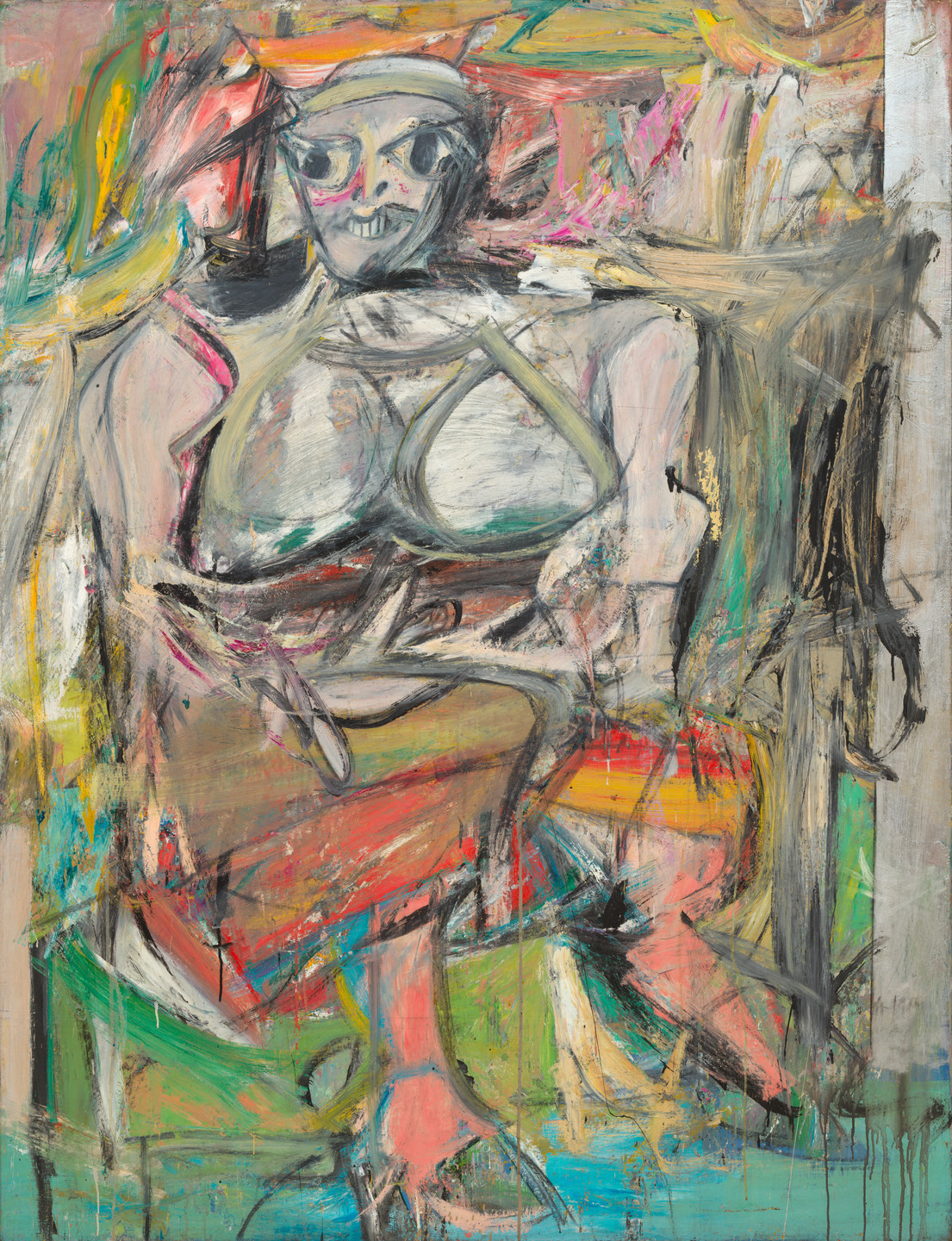I have emailed a word document copy of this to Howard as i was having trouble linking it here.
My Essay
Paul Cezanne was a painter born in Southern France in 1839 who created numerous paintings on the same place “Montagne Sainte-Victoire”, which is a mountain range in southern France. This mountain range became the subject matter of around thirty of Cezanne’s paintings, showing the interest the painter had in this specific place.

1Paul Cezanne, 1887, ‘Montagne Sainte-Victoire with large pine’, 67cm x 92cm, oil on canvas
Firstly, looking at the definition of the word ‘place’, it is defined in the Oxford Dictionary as “a particular position, point, or area in space; a location.” This automatically allows me to identify that Cezanne’s sole purpose of his many paintings were to show the beauty of the mountain range in whatever style he decided to pant it as his paintings did not include a deeper meaning to the term place, but rather were used to just show the beauty of them. Looking more specifically at the 1887 piece named “Montagne Sainte-Victoire with Large Pine” it looks at the scenery from an interesting viewpoint: using a large tree and its branches to frame the mountain and create a picturesque scene that includes techniques that complement each other.
When looking at the painting, the simplicity of the shapes used by Cezanne were highly effective. When painting with oil on canvas, the layering of colours allows for things to be built up and expressed differently. In this piece of artwork, the artist uses soft blues to build up the sky. He wrote that the colour “blue created atmosphere”[1], which shows how he wanted the calmness and peaceful atmosphere of the landscape to be picked up, due to the paleness of the blue that allows for a softer look and more relaxed painting. He then goes on to use a light grey as well as peachy tones built up on top of it to create the mountains. I find this interesting as it does not only simplify a mountain into just colour and shape, but also allows for it to be the focus of the painting due to them working in coherence with the other colours in the painting as the more saturated yellow and blue that surrounds it, only make the mountain stand out more. Again, in relation to his use of colour, the yellow he used to depict the fields and stretch of land between him, and the mountain is used to reflect “the play of light”[2] as these colours are associated with the sunshine and warm climate of the southern regions of France. This further brings in the term place as he has taken into consideration the climate of the place he is in when creating his artwork.
An extremely effective aspect of this painting is his use of line, seen in the painting as a large tree that frames the mountain range in the distance. On first look at this painting, the tree appears to be overlooked as your focus immediately goes to the picturesque mountain range in the distance. However, the tree goes unnoticed as it is the tree that allows your focus to go to the mountains. His use of placement in terms of where he is standing to paint this, show that the objects in the painting all work together as one, to allow the outcome. This is effective when using the word place as even the placement of the artist himself, allows for it to tie together perfectly.

2Berndnaut Smilde, 2013, ‘Nimbus Green Room’, photograph
Another piece of art that shows the word ‘place’ but in a completely unique way is the photography piece by Berndnaut Smilde. Smilde is a visual artist born in the Netherlands in 1978. His work is made up of photographs, sculptures and installations and the piece of work I will be looking at is called “Nimbus Green Room”. This artwork did not initially strike me as one that suits the word ‘place’, however, when looking into everything that went into putting the piece of art together, you are showed how much he had to consider the place and even alter the place to assure his artwork could be captured.
Firstly, the art of making the clouds within the room are completely dependent on the atmosphere around them. Smilde must create the perfect place and conditions to be able to create the indoor cloud. Working with a smoke machine and water vapour, he creates the place he wants the cloud positioned by wetting the area where the cloud should be fully formed and placing a light behind it to get a dramatic affect. The cloud then remains there for a few seconds before evaporating, giving Berndnaut Smilde time to capture photographs.
Something I find interesting is how he has described his artwork as “cotemporary sculptures that consist of almost nothing”[1]. Artistically, this is an interesting way of looking at what he is taking photos of and how important it is to place. Despite him needing the perfect place to create the perfect conditions, it is the place surrounding the cloud that is really being taken. The traditional style of the ‘nimbus green room’ is what makes the photograph interesting as the cloud is there for only a moment in time, yet the room brings character and contrast to the cloud.
This form of artwork, creating something that has contrasting elements is intriguing to me. The fluffy, uncontrollable cloud shows a sense of freeness, as the artist cannot manipulate the shape of the cloud while it is in the air. However, the place is manipulated for the cloud to be present and contrasts it with its rich colours and straight edge lines throughout the room, showing that not only the cloud is considered art, but also the place the cloud is in as without it, the image would not have the dramatic outcome and sense of ambiguity, while also the cloud would not exist without the place.
I think it is all captured perfectly by using still images as it is a fleeting moment in time that will remain still in a photograph and overall shows an interesting, creative way of using a place to create art.
[1] Direct Quotation from Storytellers Summit in 2019. Smilde give a talk on the art of making clouds- sourced from Youtube.
[1] Quotation from The Courtauld Institute of Art, “Paul Cézanne, Mount Sainte-Victoire with a Large Pine, 12 July 2019.
[2] Quotation from The Courtauld Institute of Art, “Paul Cézanne, Mount Sainte-Victoire with a Large Pine, 12 July 2019.
References
“The Art of Making Indoor Clouds | Berndnaut Smilde | Storytellers Summit 2019.” YouTube, 7 May 2019
https://www.youtube.com/watch?v=bat_yMCcMCU&t=304s
“Berndnaut Smilde – Ronchini Gallery Artist.” Ronchini, 8 Apr. 2021.
https://www.ronchinigallery.com/artists/berndnaut-smilde/
Kate Andrews, 2 August 2013, “Clouds.” Dezeen, 6 May 2015
https://www.dezeen.com/2013/08/02/nimbus-green-room-by-berndnaut-smilde/
“Mont Sainte-Victoire (Cézanne).” Wikipedia, Wikimedia Foundation, 22 Feb.
https://en.wikipedia.org/wiki/Mont_Sainte-Victoire_(C%C3%A9zanne)0
“Mont Sainte-Victoire with Large Pine.” Wikipedia, Wikimedia Foundation, 24 Feb. 2021.
https://en.wikipedia.org/wiki/Mont_Sainte-Victoire_with_Large_Pine
“Paul Cézanne, Mount Sainte-Victoire with a Large Pine.” The Courtauld Institute of Art, 12 July 2019.
Aoife’s essay
“When a particular space is invested with cultural and social meanings and personal experiences, it becomes a place.” (Tuan, Yi Fu. 1977). Upon searching for a theme to use for our coursework piece, my group decided on the theme ‘Place’. This term is very interesting to look at as it is sometimes hard to define. However, as stated above, place can be a space given meaning and value. I wish to discuss Vincent Van Gogh’s “The Bedroom”, 1888 and Can Togay’s “Shoes on the Danube Bank”, 2005 in relation to this theme and the ideas associated.
In 1888, Van Gogh[1] painted “The Bedroom” a few months after moving into what he refers to as “The Yellow House”, in Arles, France. The painting is self-descriptive, an oil study of the bedroom he occupied in this house when he moved from Paris. Van Gogh considered this one of his best works, writing in a letter to his brother Theo Van Gogh, “When I saw my canvases again after my illness, what seemed to me the best was the bedroom.” A lot of what is known about this painting has been due to the letters Vincent Van Gogh had sent to his brother or to other friends. The painting itself portrays a place to the artist and in turn to the viewer. This space had been very personal to Van Gogh; he himself decorated the rooms and painted pieces to display on the walls for decoration. In social respects, the piece is very intimate, a close encounter with the artist’s bedroom is not something typically seen and perhaps gives us a closer look into Van Gogh’s life.
The painting has actually become discoloured over the years and in fact looks quite different to how it originally did. Again from a letter to his brother we learn that the walls were a pale violet, the doors lilac and the floor red. Van Gogh praised himself on the colours of this room and the painting and said, “looking at the painting should rest the mind, or rather, the imagination”, in the same letter to his brother Theo Van Gogh, Arles, Tuesday 16th October 1888. Giving off a very humble and homely feeling for the ambiance of the piece. The artist liked to work with using complimentary colours and colours that contrast against each other within his pieces. With the original colours of this painting, we would have seen the colours clashing and fighting for dominance but altogether being harmonious and balanced due to the abundance of complimentary colours.
This painting appears to be very successful in terms of creating a sense of place as the viewer is immersed into the artists life in a sense and due to the context we have been given, we understand it is a home, rather than just a room. The fact that this painting is so personal exudes a welcoming and friendly atmosphere which means the painting will work well in almost any capacity to create this sense of place.
The sculpture “The Shoes on the Danube Bank” is a chilling remembrance of events from World War II in Budapest, Hungary. It was erected on the 16th April 2005 by film director Can Togay[2] with sculptor Gyula Pauer[3]. This sculpture has very important cultural and social meaning attached and consists of 60 pairs of iron shoes, appropriate to the 1940s styles in many sizes and styles. These shoes are used to represent the 20,000 Jews who were brutally shot into the Danube River by the Arrow Cross party between 1944 and 1945. These killers often would force their victims to step out of their shoes before shooting them on the bank of the river, as shoes were a very valuable possession during the Second World War. During this time, the River Danube became known as “The Jewish Cemetary” (Reeves, T.Zane. 2011).
This sculpture very clearly portrays a place, not only as a setting, but also as a moment in time. A very thought-provoking and emotionally distressing portrayal of the bitter, cold-blooded events in Hungary 1944-45, the showcase forces onlookers to see what has happened in the past, not to forget and to see some of the crimes that had been committed against the Jewish people during Hitler’s authority in the Second World War.
The use of a metal like iron was a choice made by the artist most likely so that the installation would serve a constant reminder to that which had happened. Iron being a highly corrosive metal will turn green and rust in the rain, meaning that these shoes will become more and more worn-looking over time. This effect paired withy how the artist clearly used an arrangement of different shoes from children’s to men’s and women’s forces spectators to appreciate how this tragedy happened to anyone as long as they were Jewish. We are encouraged to see how the world was such a different place for such a large group of people. This installation is very successful in showcasing place, and we are unable to help but know what the meaning behind it is.
In conclusion, I believe that both works I have discussed, Van Gogh’s “The Bedroom” and Togay’s “The Shoes on the Danube Bank” are extremely successful at showing their audience a sense of “Place” and even the place that they represent. I believe that in both pieces, the viewer is submersed into the work as is the artists intention.
[1] Dutch artist born in Groot-Zundert on March 30th 1853, he died July 29th 1890, supposedly from a self-inflicted gunshot wound in Auvers-sur-Oise.
[2] Can Togay János (Budapest, August 27, 1955 – ) is a Hungarian film director, screenwriter, actor, poet, producer, cultural manager and cultural diplomate.
[3] Gyula Pauer was born on February 28, 1941 in Budapest, Hungary. He was an actor and production designer. He died on October 8, 2012 in Budapest.

Vincent Van Gogh, 1888, The Bedroom, oil on canvas, 72.4cm x 91.3cm

Can Togay, 2005, Shoes on the Danube Bank, iron
Bibliography
Atlas Obscura (2021) Shoes on the Danube Promenade. Available at: HTTPS://www.atlasobscura.com/places/shoes-on-the-Danube-promenade (Accessed 03-05-2021)
Britannica, The Editors of the Encyclopaedia. (26 Mar. 2021) “Vincent Van Gogh”. Available at: HTTPS://www.Brittannica.com/biography/Vincent-van-Gogh (Accessed 03-05-2021)
IMDB (2021) Gyula Pauer. Available at: HTTPS://www.imdb.com/name/nm0666718/ (Accessed 04-05-2021)
Reeves, T. Zane, Ph.D. (2011) Shoes Along the Danube: Based on a True Story. Durham: Strategic Book Group. p.190
Sheryl Silver Ochayon/ Yad Vashem (2021) “The Shoes on the Danube Promenade- Commemoration of the Tragedy”. Available at: HTTPS://www.yadvashem.org/articles/general/shoes-on-the-Danube-promenade.html (Accessed 04-05-2021)
Transmediale (2021) Can Togay János. Available at: HTTPS://transmediale.de/content/can-togay-j-nos (Accessed 04-05-2021)
Van Gogh Museum (2021) The Bedroom. Available at: Https://www.vangoghmuseum.nl/en/collection/s0047V1962 (Accessed 26-04-2021)
Van Gogh Museum (2021) Bedroom in the Yellow House. Available at: HTTPS://ontrafel.vangogh.nl/en/story/36/bedroom-in-the-yellow-house (Accessed 26-04-2021)
Van Gogh Gallery (2021) Vincent Van Gogh Biography. Available at: HTTPS://www.vangoghgallery.com/misc/biography.html (Accessed 26-04-2021)
Van Gogh Museum (2021) ‘The colour has to do the job here’. Available at: HTTPS:///ontrafel.vangogh.nl/en/story/37/the-colour-has-to-do-the-job-here/ (Accessed 26-04-2021)
Dearbhla’s Essay
The 2006 sculpture ‘Cloud Gate’ which was created in by an Indian born British sculpture artist, Anish Kapoor, is situated in Millennium Park in Chicago. It is a bean shaped, mirror sculpture which is made up of 168 stainless steel plates that are welded together and placed on the ground. The shiny, polished surface of the sculpture gives the viewer ‘a new way to think about the non-objective object.’[1] In relation to the theme ‘place’ that we have chosen, Kapoor has made it possible for the sculpture to reflect and distort Chicago’s skyline and play with light which changes as the sun and clouds pass by over time. Millennium Park was specifically chosen by Kapoor to display ‘the bean’ because of its beautiful cityscapes which attracted photographers and tourists from all over the world. Kapoor’s sculpture, built in Lurie Park, initially brought life to the plans of Millennium Park which had been delayed for years and promised it a successful future. Edward Hopper’s oil on canvas ‘Nighthawks’ 1942 captures a group on individuals, possible four strangers, in a diner in New York City at night. There is a strong emphasis on the damaging impact of living in a lonely, urban city as Hopper once said, “Unconsciously, probably, I was painting the loneliness of a large city.” [2] The composition of this painting is unique as it allows the viewer to see the individuals from both a front and face on view to see that no one is communicating regardless of their physical closeness. Unlike Hopper’s painting, the onlookers of ‘Cloud Gate’ view can change depending on their position in front of the large, mirrored surface. Kapoor was largely influenced by the texture of liquid mercury and how it reflects light.[3] He has famously said ‘I am interested in sculpture that manipulates the viewer into a specific relation with both space and time.’[4] The sculpture can appear bright and beautiful in daylight or dull and dreary in late evenings, so it is also massively influenced by the place it is situated in. In contrast to ‘Cloud Gate,’ Hopper has used dull, gloomy lighting and shadows that have captured an overwhelming sense of loneliness and human vulnerability which demonstrates the harsh reality that although there is a place of physical closeness, there can be a lack of psychological comfort from one another. The painting ‘Nighthawks’ clearly stresses and highlights that human interaction and our inability to connect has entered society in 1940’s, a long time before the introduction of technology and smartphones which many argue to be at fault for a lack of connection in today’s world. However, Kapoor’s artwork relies on the viewer’s involvement, otherwise the sculpture loses its story. This is shown on the underside of the bean sculpture is the Omphalos which the Greeks describe as ‘the centre of the world’ and it is sacred and traditionally dedicated to a god.[5] This artwork ultimately becomes celebratory in how it creates a ceremonial place for tourists. It can therefore be said that Kapoor’s artwork demonstrates the opposite of Hopper’s ‘Nighthawks’ in how people can be brought together emotionally in places through shared experiences. Hopper was inspired by the, the 1940’s, after the Pearl Harbour Attack and the growing paranoia and anxiety among the people of New York, in case there was a second attack. Unlike Kapoor’s ‘Cloud Gate’ Hopper used a real-life diner in Greenwich Village which sits on a crossroads in reference once again to the crisis of existing physical proximity and the lack of emotional connection in urban cities.
Personally, I would agree that Kapoor’s ‘Cloud Gate’ sculpture is successful, mainly because it is not only beautiful to look at, but he mainly entices his target audience to consider their surroundings and how they see themselves in life. In many ways his sculpture reflects the beauty of the place it is situated within, but it also gets the onlooker involved in some way which is extremely clever and makes it that bit more special as artwork. It is interesting how it becomes a metaphor and acts as a ‘magic bean’ that transforms a place of reality into a new world that in many ways excites onlookers. I would also agree that Hopper’s painting ‘Nighthawks’ is very successful because of how accurately he displays that places can directly influence our experiences of loneliness, particularly urban cities. It is admirable how this painting also gives people an idea of the mental suffering and devastating impact of world war two in America which is crucial in helping new generations try to understand history. The image has no doubt a timeless, universal quality but also raises various questions and invites the viewer to create their own imaginative narrative of what is happening. It is noticeable how similar Hopper’s style is to Van Gogh’s painting ‘Café at Night’ which could VERY well have sparked some inspiration. I believe that credit is due certainly and this is evident as it is one of the most iconic paintings in the history of American Art. After evaluation, the artwork that I would say is most successful in relation of the theme ‘place’ is Kapoor’s ‘Cloud Gate’ because the sculpture would otherwise not have worked if it had been placed in the wrong location and Hopper’s ‘Nighthawks’ is focused more on the raw emotion of loneliness.
[1] Heidi Reitmaier, 2007, Anish Kapoor, In Conversation with Heidi Reitmaier {accessed 27th April} {online} http://anishkapoor.com/177/in-conversation-with-heidi-reitmaier
[2] Edward Hopper, 2021, Nighthawks 1942 by Edward Hopper {accessed on 27th April 2021} {online] https://www.edwardhopper.net/nighthawks.jsp ‘It is Hopper’s most famous work and is one of the most recognizable paintings in American art. The red-haired woman was modelled by the artist’s wife, Jo. Hopper’s biographer, Gail Levin, speculates that Hopper may have been inspired by Café Terrace at Night by Vincent van Gogh, which was showing at a gallery in New York in January 1942.’
[3] Sneha Dewani, 2020, Cloud Gate: A Fun Interactive Sculpture, The Arch Insider {accessed 25th April} {online} https://theclare.com/chicago-bean-history-inside-story-behind-cloud-gate/
[4] Heidi Reitmaier, 2007, Anish Kapoor, In Conversation with Heidi Reitmaier {accessed 27th April} {online} http://anishkapoor.com/177/in-conversation-with-heidi-reitmaier
[5] Richard Storer-Adam, 2021, Cloud Gate – a polished stainless steel sculpture inspired by a drop of mercury taking centre stage in the city {accessed on 27th April} {online} https://www.doublestonesteel.com/blog/art-and-sculpture/cloud-gate-a-polished-stainless-steel-sculpture-inspired-by-a-drop-of-mercury-taking-centre-stage-in-the-city/

Edward Hooper, 1942, Nighthawks, 84cm x 152cm

Anish Kapoor 2006 Cloud Gate stainless steel 33ft x 42ft x 66ft
Bibliography
Anon., 2021. Choose Chicago. [Online]
Available at: https://www.choosechicago.com/articles/tours-and-attractions/the-bean-chicago/
[Accessed 23rd April 2021].
Artic Insititute Chicago, 2021. Artic Institute Chicago. [Online]
Available at: https://www.artic.edu/artworks/11628/nighthawks
[Accessed 24th April 2021].
Artsper Magazine, 2021. Artsper Magazine. [Online]
Available at: https://blog.artsper.com/en/a-closer-look/artwork-analysis-nighthawks-by-edward-hopper/
[Accessed 24th April 2021].
Chevrier, J., 2018. The Conversation. [Online]
Available at: https://theconversation.com/anish-kapoors-cloud-gate-playing-with-light-and-returning-to-earth-our-finite-world-102272
[Accessed April 23rd 2021].
Choose Chicago, 2021. Choose Chicago. [Online]
Available at: https://www.choosechicago.com/articles/tours-and-attractions/the-bean-chicago/
[Accessed 24th April 2021].
Curtis, S., 2020. Artistic Fuel. [Online]
Available at: https://www.artisticfuel.com/sculptiure/cloud-gate-chicagos-famed-silver-legume-sculpture/
[Accessed 24th April 2021].
Hopper, E., 2004. Edward Hopper. In: H. Liesbrock, ed. Masterpaintings . Munchen, Germany: Schirmer/Mosel Verlag Gmbh, p. 120.
Hopper, E., 2021. Edward Hopper. [Online]
Available at: https://www.edwardhopper.net/nighthawks.jsp
[Accessed 24th April 2021].
Kapoor, A., 2008. Anish Kapoor. In: N. Baume, ed. Past, Present, Future. Cambridge: Mit Press, p. 143.
Kapoor, A., 2021. Anish Kapoor. [Online]
Available at: http://anishkapoor.com/210/cloud-gate
[Accessed 23rd April 2021].
Martinique, E., 2018. WideWalls. [Online]
Available at: https://www.widewalls.ch/magazine/edward-hopper-nighthawks-painting
[Accessed 24th April 2021].
Mastropieri, K., 2020. The Culture Trip. [Online]
Available at: hhtps://theculturetrip.com/north-america/usa/Illinois/articles/brief-history-of-the-chicago-bean/
[Accessed 24th April 2021].
Overstock Art, 2021. Overstock Art. [Online]
Available at: https://www.overstockart.com/painting/night-hawks-1942
[Accessed April 27th 2021].
Raz-Russo, M., 2021. Britannica. [Online]
Available at: https://www.britannica.com/biography/Anish-Kapoor
[Accessed April 24th 2021].
Storer-Adam, R., 2021. Double Stone Steel. [Online]
Available at: https://www.doublestonesteel.com/blog/art-and-sculpture/cloud-gate-a-polished-stainless-steel-sculpture-inspired-by-a-drop-of-mercury-taking-centre-stage-in-the-city/
[Accessed 27th April 2021].
The Clare, 2021. The Clare. [Online]
Available at: https://theclare.com/chicago-bean-histpryinside-story-behind-cloud-gate/
[Accessed 24th April 2021].
Tucker, J., 2012. Sartle. [Online]
Available at: https://www.sartle.com/artwork/cloud-gate-anish-kapoor
[Accessed 23rd April 2021].
Zapella, C., 2014. Khan Academy. [Online]
Available at: https://www.khanacademy.org/humanities/art-1010/american-art-to-wwii/social-realism/a/hopper-nighthawks
[Accessed 24th April 2021].






















































